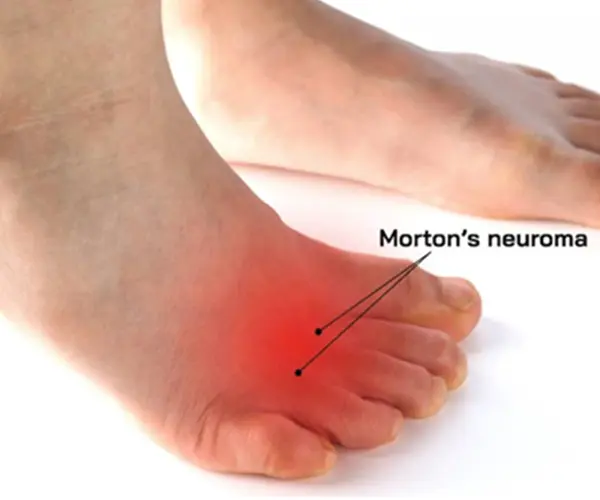Foot Neuroma
What’s Morton’s Neuroma?
Morton’s neuroma is a painful foot condition involving a benign growth of tissue around the nerves that run between the metatarsal bones in the ball of the foot. This leads to symptoms like sharp, burning pain, tingling, or numbness in the toes, often aggravated by pressure or wearing tight footwear. Treatment options range from conservative measures like orthotics and footwear changes to more invasive interventions, including injections or surgical removal of the neuroma when necessary.

Common Causes for a Morton’s Neuroma
Morton’s neuroma is a painful condition that typically affects the ball of the foot, often between the third and fourth toes. Commonly caused by compression or irritation of the plantar digital nerves, several factors contribute to its development. One primary cause is wearing tight or ill-fitting footwear, particularly high heels or narrow-toed shoes, which can squeeze and stress the nerves. Repetitive overuse and high-impact activities, like running, can also lead to this condition. Additionally, foot deformities, such as bunions or hammertoes, can increase the risk of Morton’s neuroma. Understanding these common causes is crucial for prevention and early intervention to alleviate the discomfort and prevent further progression of the condition.
Diagnosing Morton’s Neuroma
Diagnosing Morton’s Neuroma involves a comprehensive evaluation to confirm the presence of this painful condition. Healthcare professionals typically follow these steps:
Conservative Treatments for Morton’s Neuroma
Conservative treatments for Morton’s neuroma are often the first line of defense against this painful condition, focusing on alleviating symptoms and preventing the need for surgical intervention. These approaches include:
These conservative treatments are often effective in managing Morton’s neuroma, but the choice of approach should be tailored to the individual’s specific condition and guided by a healthcare professional’s recommendation. If conservative methods fail to provide sufficient relief, more invasive options, including surgical removal of the neuroma, may be considered.
Request An Appointment
Need Help With Your Foot And Ankle?
